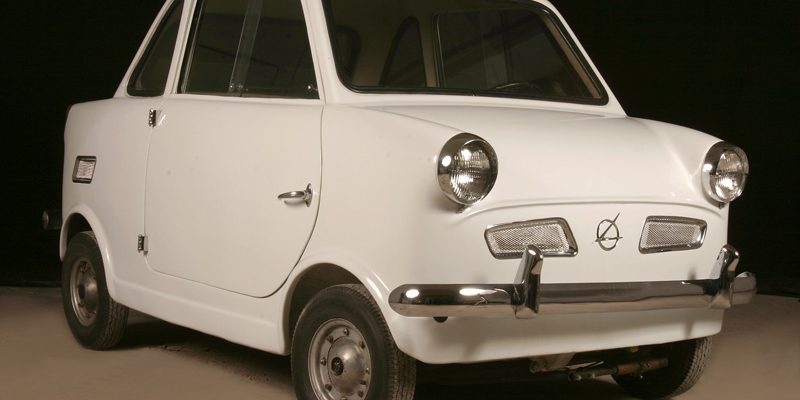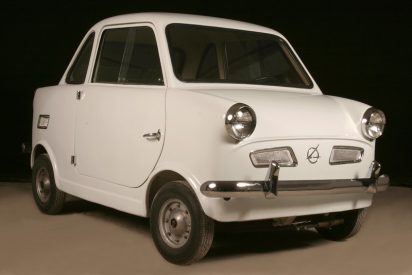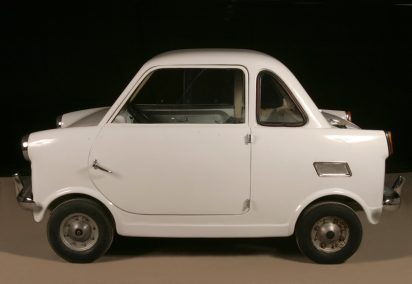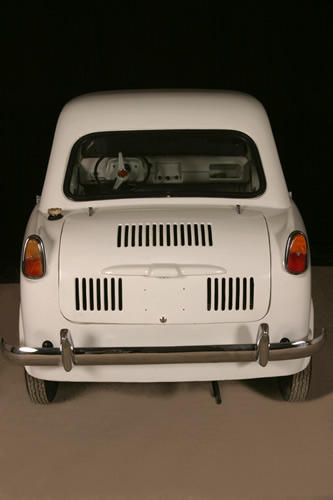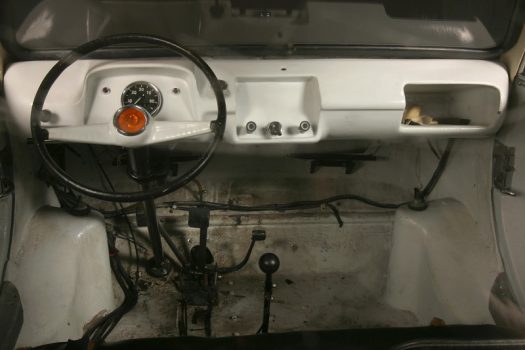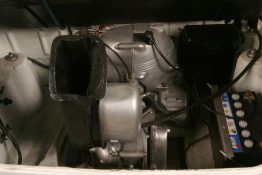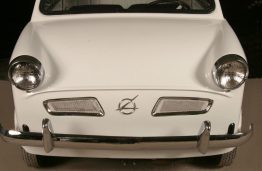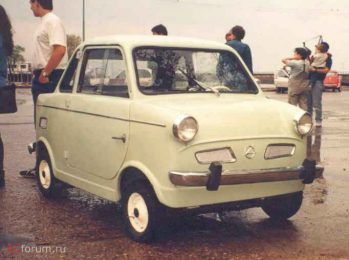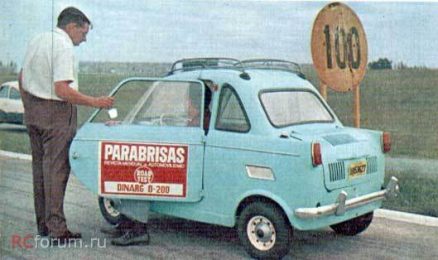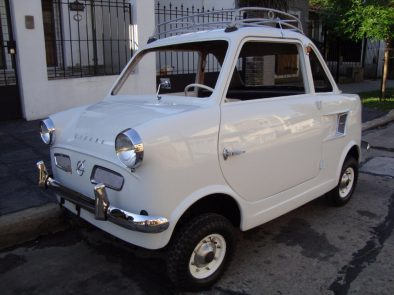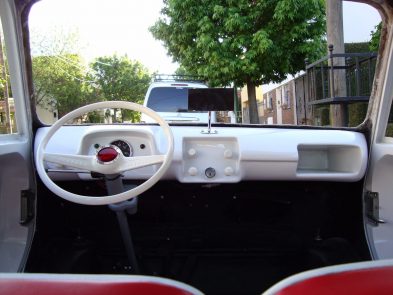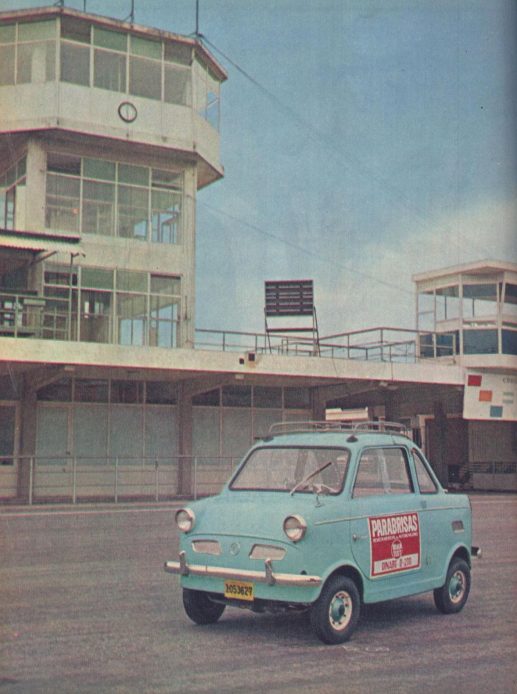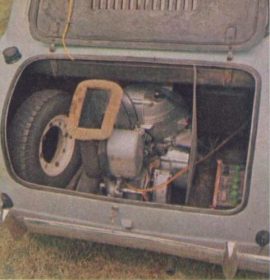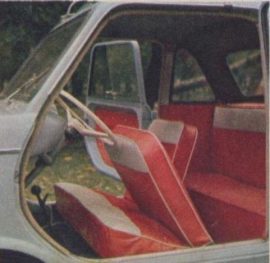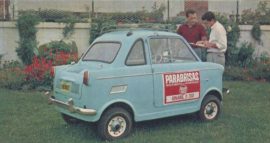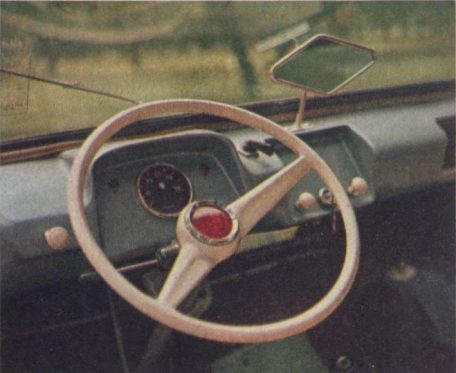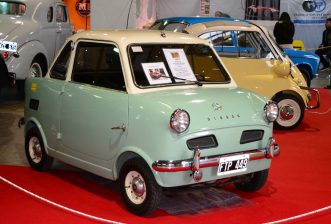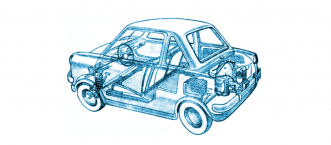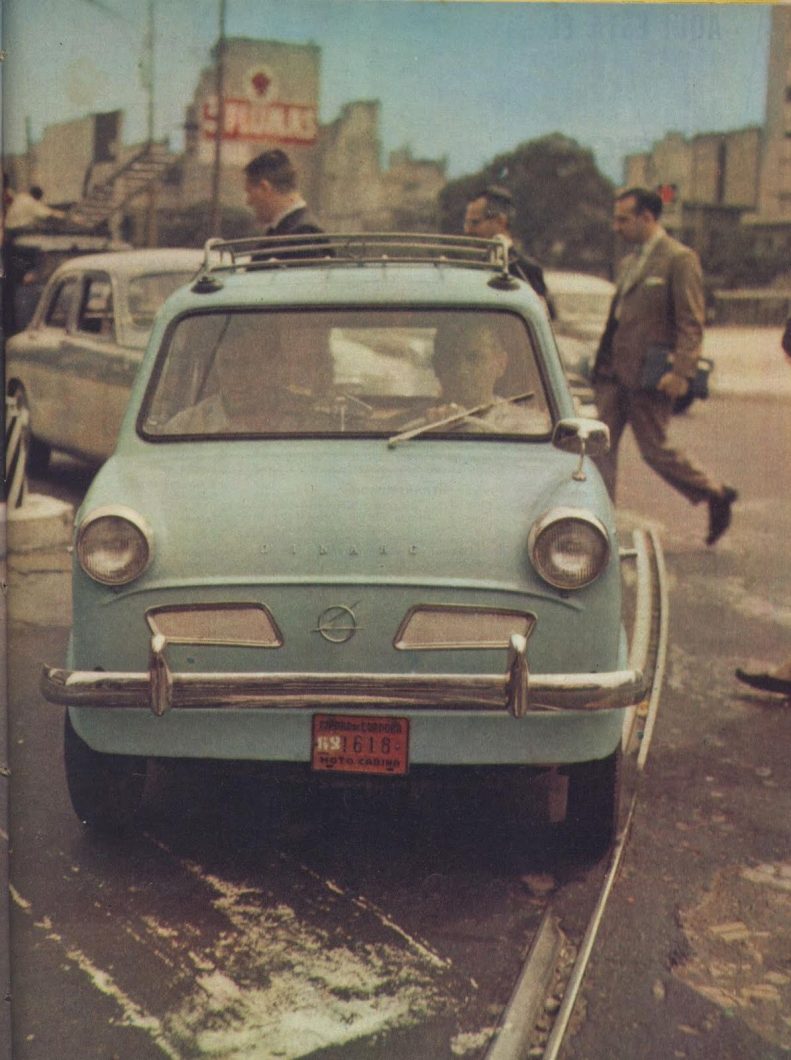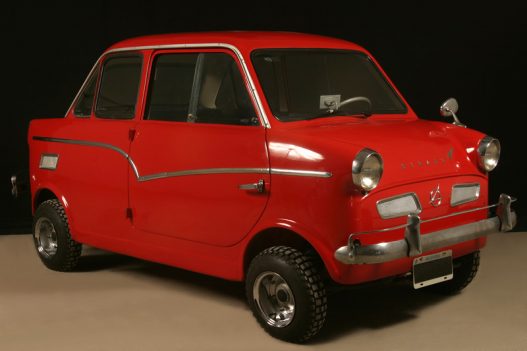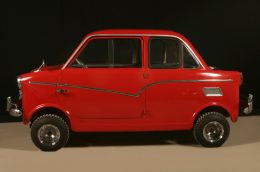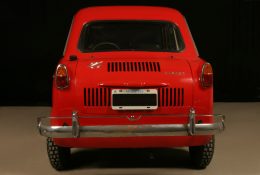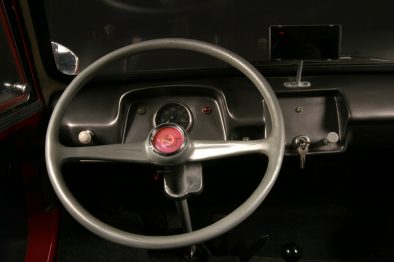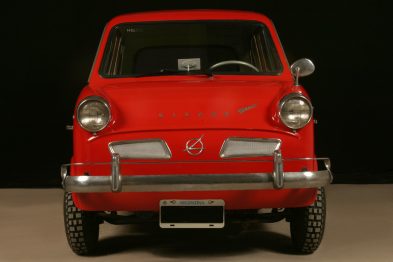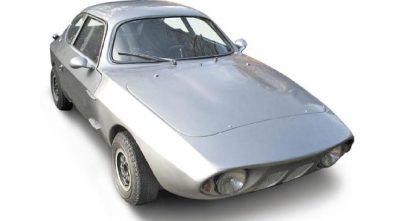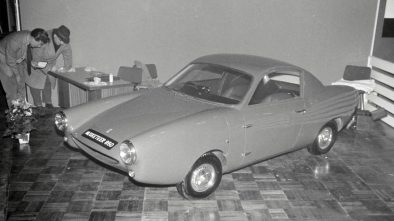Dinarg D-200
The Cordovan company Dinámica Industrial Argentina SA developed a microcar named Dinarg D-200. The body and chassis were an Argentine design and the engine was a German Sachs marketed in the country by the company Televel.
After doing design and tests, the company granted permission to manufacture the new cars that had a body made of plastic reinforced with polyester resin and glass wool, what is now known as GRP bodywork.
The engine chosen for the D-200 was the same one that equipped the Bambi, the national version of the Fuldamobil S-7, the Sachs LDR 200 single-cylinder with a displacement of 191 cubic centimeters and a power of 10.2 HP at 5,250 revolutions per minute. The compression was 6.3:1 and it had Dynastart, the element that served as a starter and a dynamo.
The Sachs LDR 200 was cooled by a centrifugal turbine. The brakes were hydraulic and powered all four wheels. The parking brake was mechanically operated on the rear wheels. The suspensions were independent on all four wheels, like almost all microcars that were manufactured in the country.
Top speed of the Dinarg D-200 was 46,5 mph (75 km/h). Consumption in the city was 17 kilometers per liter, while on the road, at 60-70 kilometers per hour, consumption was 18 kilometers per liter.
Because it was a motorcycle engine, to reverse you had to stop the engine and turn the reverse key which was on the dash. Thus the engine started in the opposite direction and could circulate backwards in the four speeds that the gearbox had.
All four speeds had three dead spots, one between first and second, one between second and third, and one last between third and fourth. In addition, the gear lever always stayed in the same position.
The doors opened backwards. Both had a large pocket for storing items. This was allowed by the windows that were sliding and not lifting. Wide doors for such a tiny vehicle, suffice it to recall that the D-200 had a total length of 2 meters and 43 centimeters. The total height was 1 meter and 20 centimeters. There were long and short versions available.
Technically it was a very, very small 2+2 coupe with fixed rear side windows. It did not have a trunk but you could fit a large suitcase behind the seats or use the roof rack, always without abusing the load because the little motor was going to notice it.
The spare wheel was housed along with the engine in the rear of the vehicle. The dash of the Dinarg D-200 only had a speedometer with an odometer and several indicator lights. There was no gasoline meter, so you had to remember when you refueled the car last time. The turn signal operated with a clockwork system that returned to zero after 30 seconds.
